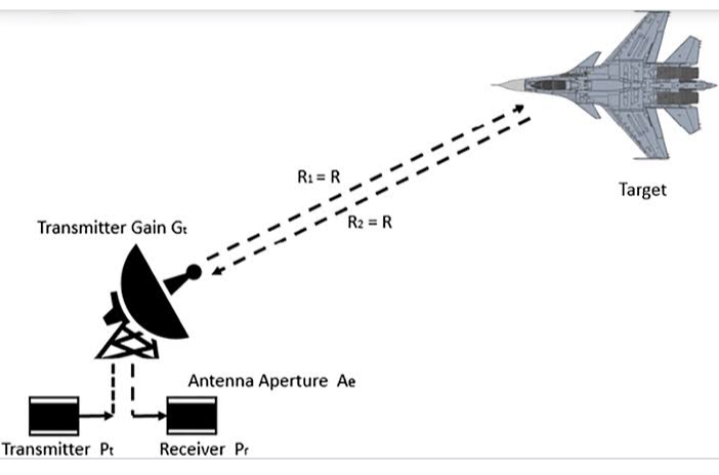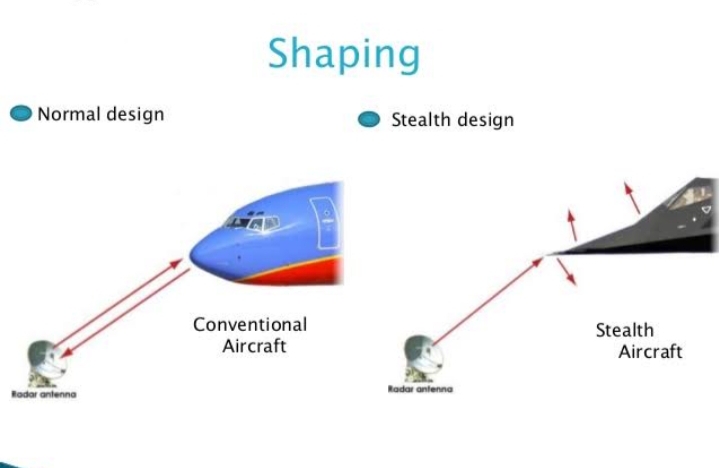Stealth Technology: How Aircraft Becomes Invisible?

Stealth feature is a military tactic, used to make aircraft, ships, submarines, etc. less visible to radar, infrared, SONAR, and other detection methods. It uses a variety of features and technology that reduces its ability to reflecting/emission of radar, infrared, and Radio Frequency (RF) spectrum. Stealth technology uses electronic countermeasures and computer simulations which makes a stealth aircraft difficult, for an opponent’s radar to detect, track or attack it. Stealth aircraft allows a country to attack, gather intelligence, perform spy operations on enemies’ territory without being caught, by its radars.
Today in this article we will discuss, how an aircraft becomes stealth?, what kind of technology or application it uses to achieve the stealth feature? So let’s start…………….
History
The Germans were first to made an attempt in achieving feat of stealth aircraft. During World War 1, they experimented with the use of cellon (cellulose acetate), a transparent covering material, in an attempt to reduce the visibility of its military aircraft. But during later stage of their experiment, it proved ineffective and even counterproductive as sunlight glinting from the covering made the aircraft even more visible. The material used degraded quickly in presence of sunlight, so the project was dropped.
The modern stealth aircrafts, were first developed by America. During cold war, in an attempt to attack and conduct spy operations over Soviet’s territory, America started its program for development of stealth aircraft. During 1970’s, US Department of Defence, launched project Lockheed Have Blue with an aim to develop stealth fighters. The success of project Have Blue paved the way of developing world’s first stealth fighter, FA-117 Nighthawk. The radiation absorbent material, radar absorbent paint, low radar cross section (RCS), curvilinear surface of FA-117, either absorbs most of the radio waves or reflect its away from the receiver of enemies radar and sensor, almost making it invisible in the sky. Now many stealth aircrafts are operational like F-22 Raptor, F-35 lightning, Su-57 etc. India’s AMCA project and Tejas MK-ll also working towards achieving stealth feature.
How Stealth Feature Is Achieved?
Achieving stealth feature for an aircraft is all about using technology to defeat detection systems that operate using the EM spectrum. To defeat these detection systems an aircraft should have minimum signatures in the following areas of the EM spectrum :-
- Radar
- Infrared
- Acoustic
- Visual
Also read :- Why Submarines Are Always Painted Black?
Low Radar Signature
Radar is most important device in in tracking and detection of any aircraft. Radar systems work by emitting radio waves in air from a transmitter, these radio waves get reflected by the aircraft, and is received by a receiver. It provides aircraft’s location, position, range, height etc. It provides information about the target without knowledge to the target that it is being tracked.

There are mainly two ways for an aircraft of not getting tracked by a radar :-
- Either it captures the radio waves i.e. prohibiting radio waves to reach receiver’s end.
- Or reflecting the radio signals away from the receiver.
Radar Absorbent Materials (RAMs) are used in making and coating of aircrafts airframe. Materials like Re-enforced Carbon Carbon(RCC), carbon black particles, tiny iron balls etc. are used for coating of its airframe. These RAMs contain free electrons in their atoms, and it absorbs most of the radio waves. Thus, limiting the probability of getting tracked.
Unlike commercial aircraft, military aircraft of a stealth feature, have not any curve or circular faces, but it has a faceted surfaces (means its surface have many sides, vertices and has a conical shape structure).

Also as most of the radio waves fall horizontally on aircraft i.e. radio waves makes horizontal angle with the aircraft surface. So an aircraft is designed in such a way that the height of the vertical surfaces of an aircraft is kept at minimum, like by elimination of external pylons for weapons and storing weapons in internal weapon bays to reduce its radar reflections. Thus, due to its faceted surfaces and lower vertical height of an aircraft, it radiates most of the radio waves away from the radar receiver and have low Radar Cross Section (RCS).
Low Infrared Signature

The infrared (IR) sensors or camera, can track and detect an aircraft, from the heat coming out of it. There are two primary sources of heat coming from an aircraft:-
- The heat of the engine and its exhaust gases
- The heating of its airframe due to air friction
The exhaust gases of jet engine have temperatures as high as 850 to 900 °C. When reaching the free atmosphere outside the exhaust nozzle of the engine, the exhaust gases expand out in air and radiates infrared wavelength of heat energy and any IR sensors can track it.
Many ways are used to reduce the engine infrared signature, like the exhaust duct of jet engines are thermally insulated with ceramic tiles, which helps it in hiding its thermal signature. The jet engines also have feature which allows the mixing of cooler air with the post-combustion hot exhaust gases. It helps in cooling down of exhaust gas, thus reducing the IR signature.
The engines of a stealth aircraft is designed in such a way that it is hiding in airframe of a aircraft or its engines are above of its wings, like in case B-2 “spirit” bomber. It also reduces its IR footprint.

Due to friction the airframe of aircraft also heats up, using conductors these heat is conducted away from the air or it is scattered in different directions, thus reducing the probability of getting tracked by IR sensors of opponent.
Low Acoustic Signature
Acoustic or aircraft noise is another means of its detection. Jet engine noise is caused by the high speed movement of high pressure air in engine’s air flow passages.
The jet engine’s noise is reduced by improving the engine air flow passage. Several noise cancellation devices are also used. Also many modern attempt to improve engines air flow passages to reduce noise, are underway.
The sonic footprint of an aircraft is also a major source of its detection. A “Sonic Boom” is produced when an aircraft crosses the speed of sound i.e. 1234 kilometre per hour or when flying at supersonic speed. Sonic waves or shock waves are produced by a sonic boom and it can easily be tracked by a proper listening post. It provides direction and position of an aircraft to its opponent. Stealth aircraft, thus usually operates at subsonic speed i.e. speed less than that of sound to avoid sonic boom.
The B-2 “spirit” a strategic bomber of US operates mostly at subsonic speeds. Newer aircrafts such as F-22 raptor, F-35 lightning, SU-57 etc. are capable to operate both at subsonic and supersonic speeds. Thus, these aircrafts act as a stealth during coveted operations and also during war, it can be used in offensive aerial combat.
Low Visual Signature
Visual detection i.e. detection of an aircraft by the human eye is most important in Within Visual Range (WVR) aerial combat and also for Man Portable Air Defence Systems (MANPDS). If radar and infrared (IR) fails to detect an aircraft, still it can be tracked visually and can be shot down. So, reducing visible signature is also important for achieving stealth feature.
There are many ways to achieve low visible signature, but two ways are used commonly, (1) small size of aircraft (2) camouflage paints.
The smaller the size of an aircraft, the less likely is its visible detection. The LCA Tejas and Gripen, due to their smaller size compared to their contemporaries, are best examples of aircraft with low visual signature.
The aim of camouflage paint is to reduce the contrast between the aircraft and the background it it is viewed against. Carefully selected paints are used to paint the aircraft surface with the aim that it matches the background, that it is most likely to be viewed against.

For example, aircraft are painted brown and green, when they fly over agricultural land and forest area. Over desert, sand brown colour is used. A dull blue-grey colour is used ove rsea. Nowadays, aircraft are painted with low contrast grey colour. Thus, camouflage painting is useful in reducing the visual signature of aircraft, which is relatively flying at close range.
Although using all these features doesn’t make any aircraft completely invisible to enemies, but still stealth aircrafts are important to conduct any coveted operations. It is also being used in submarines and naval ships.





